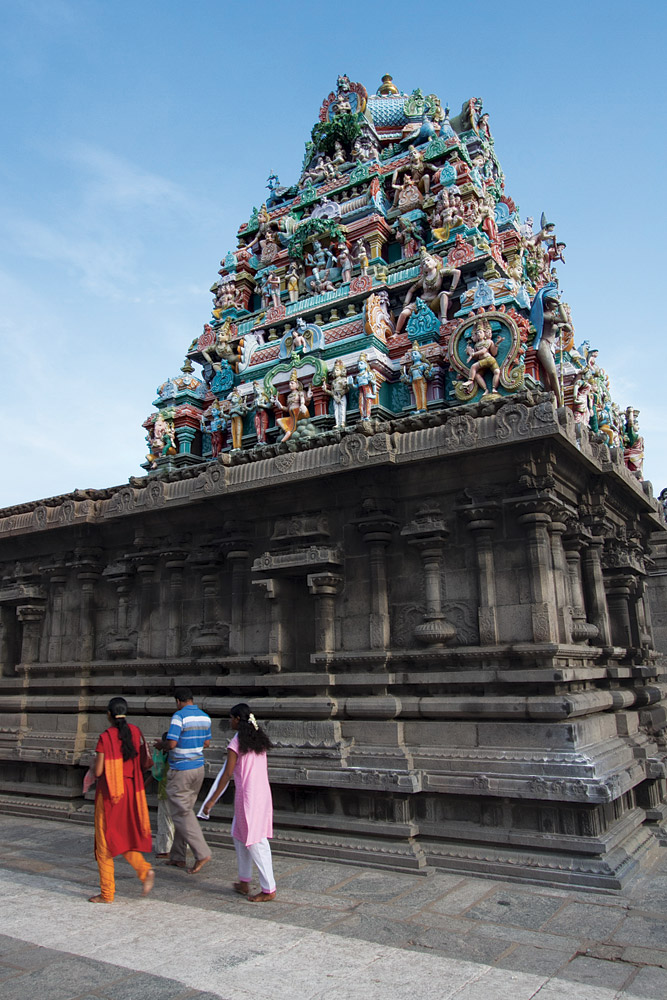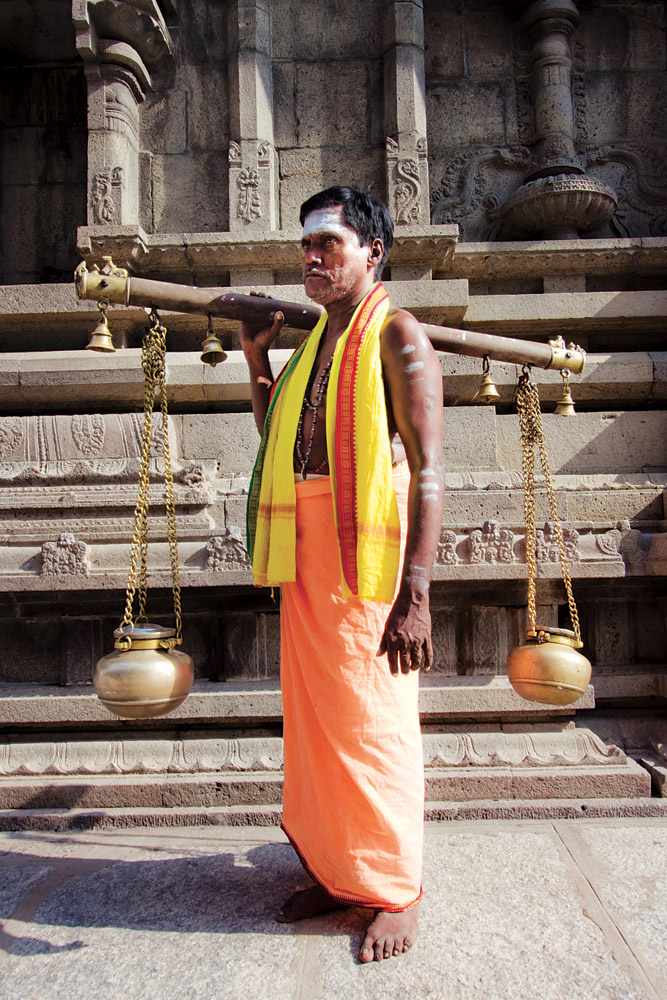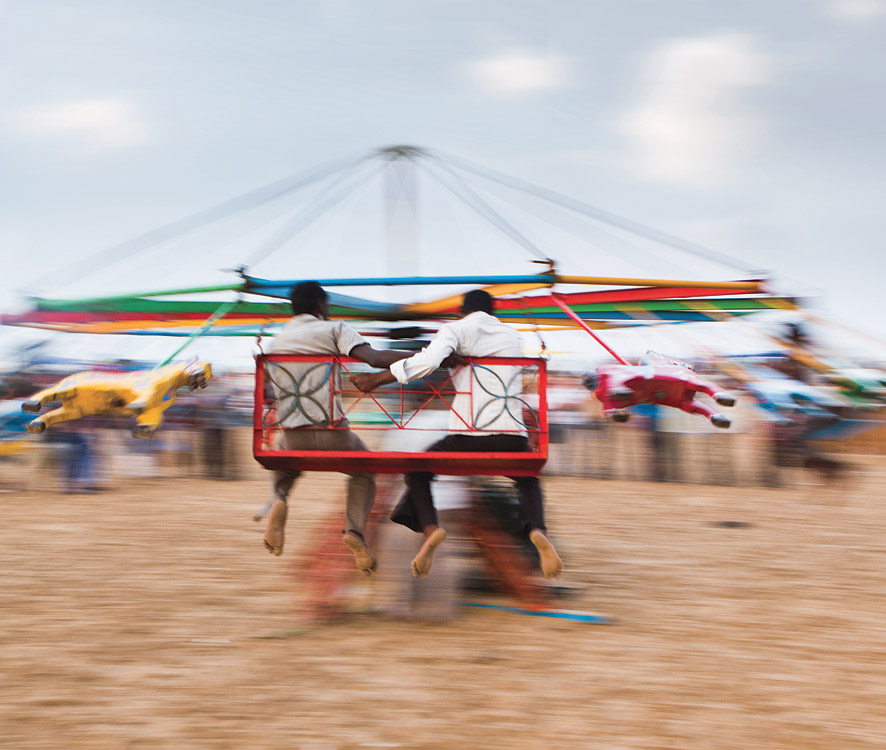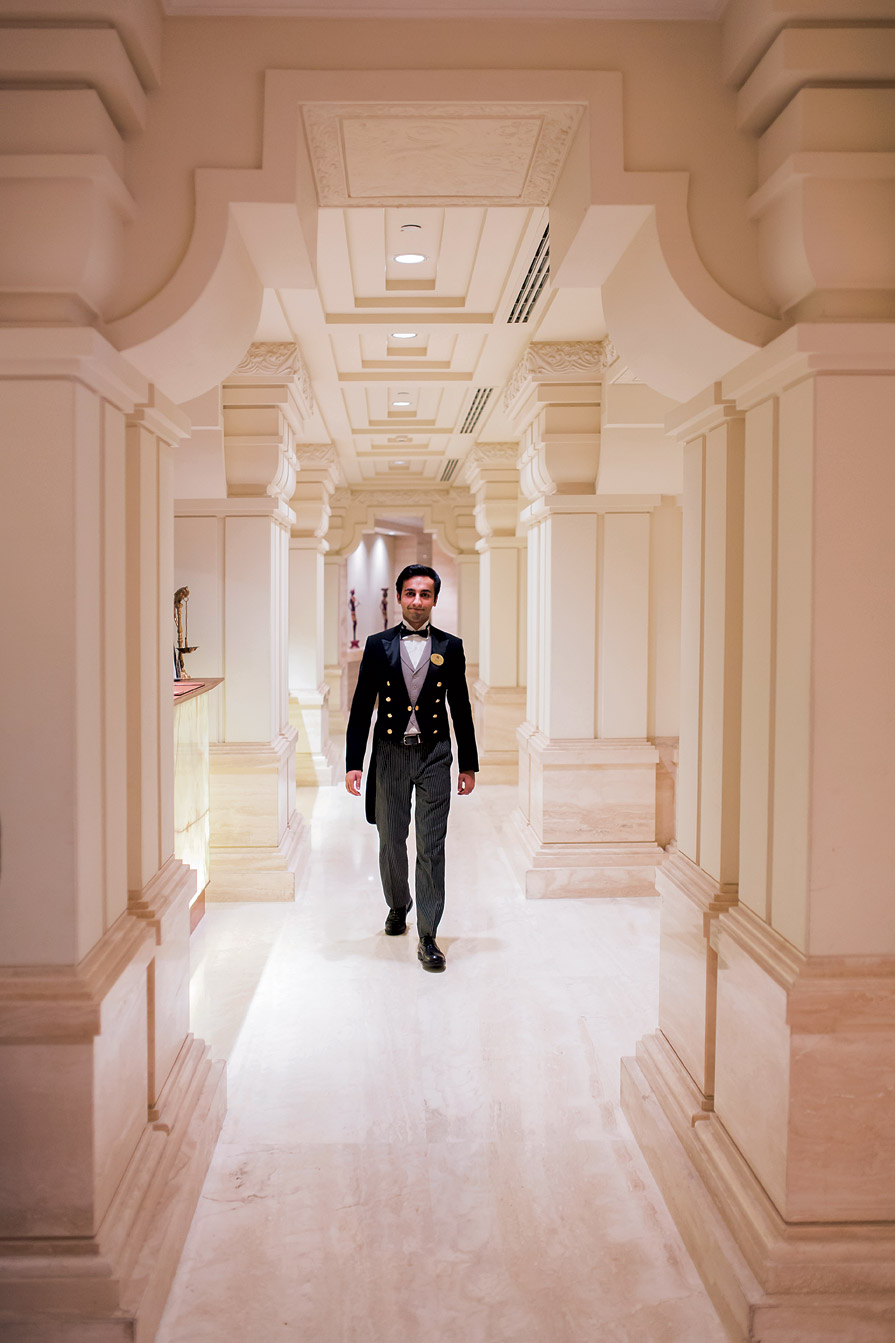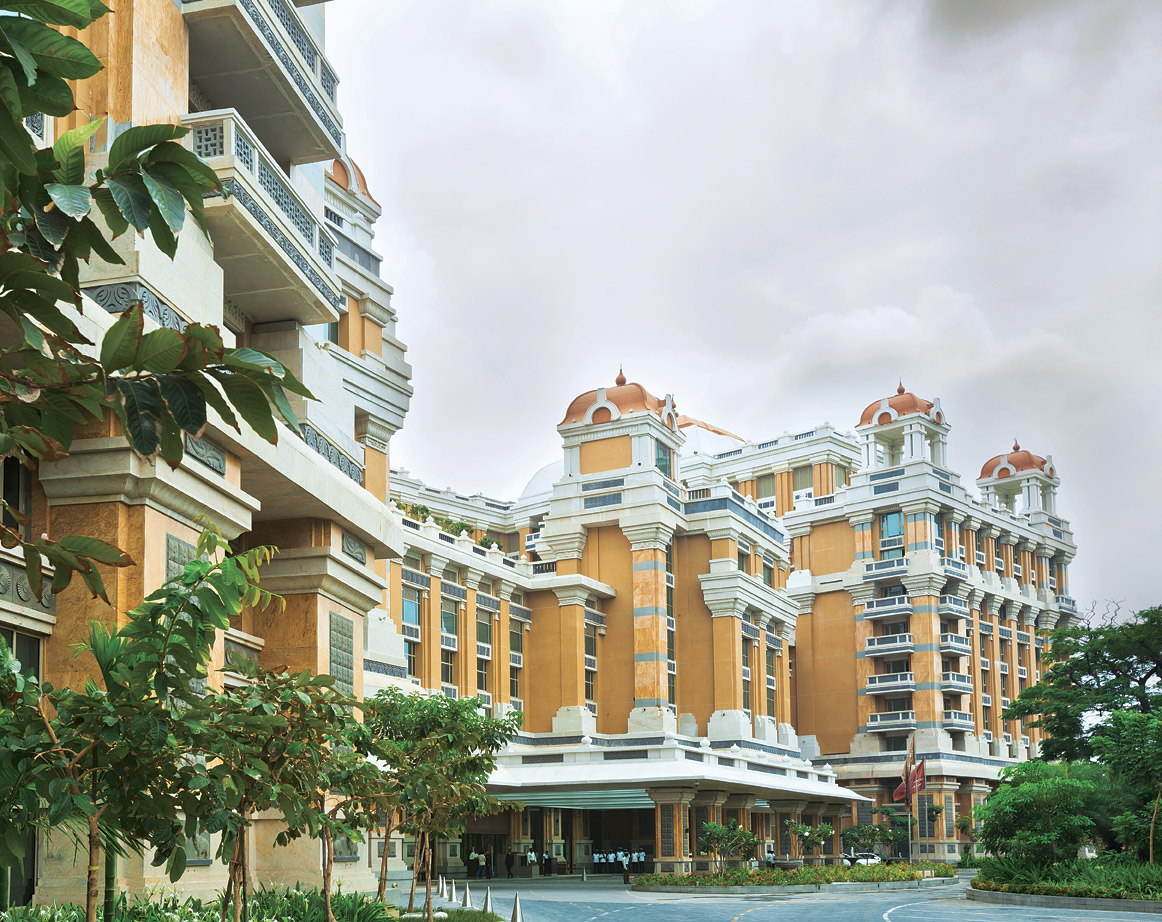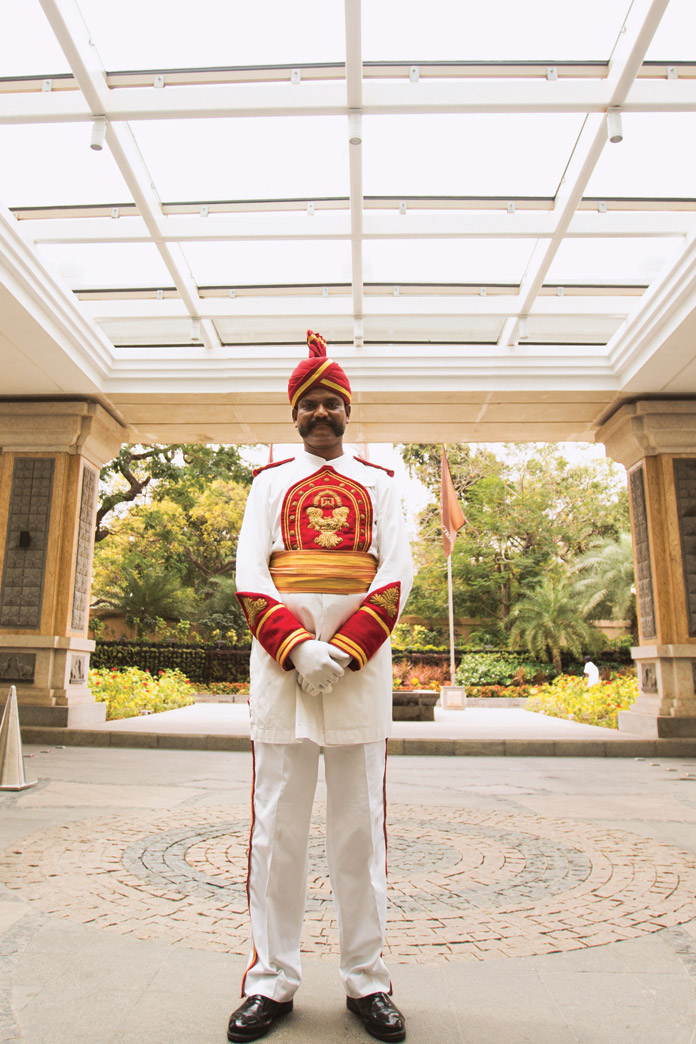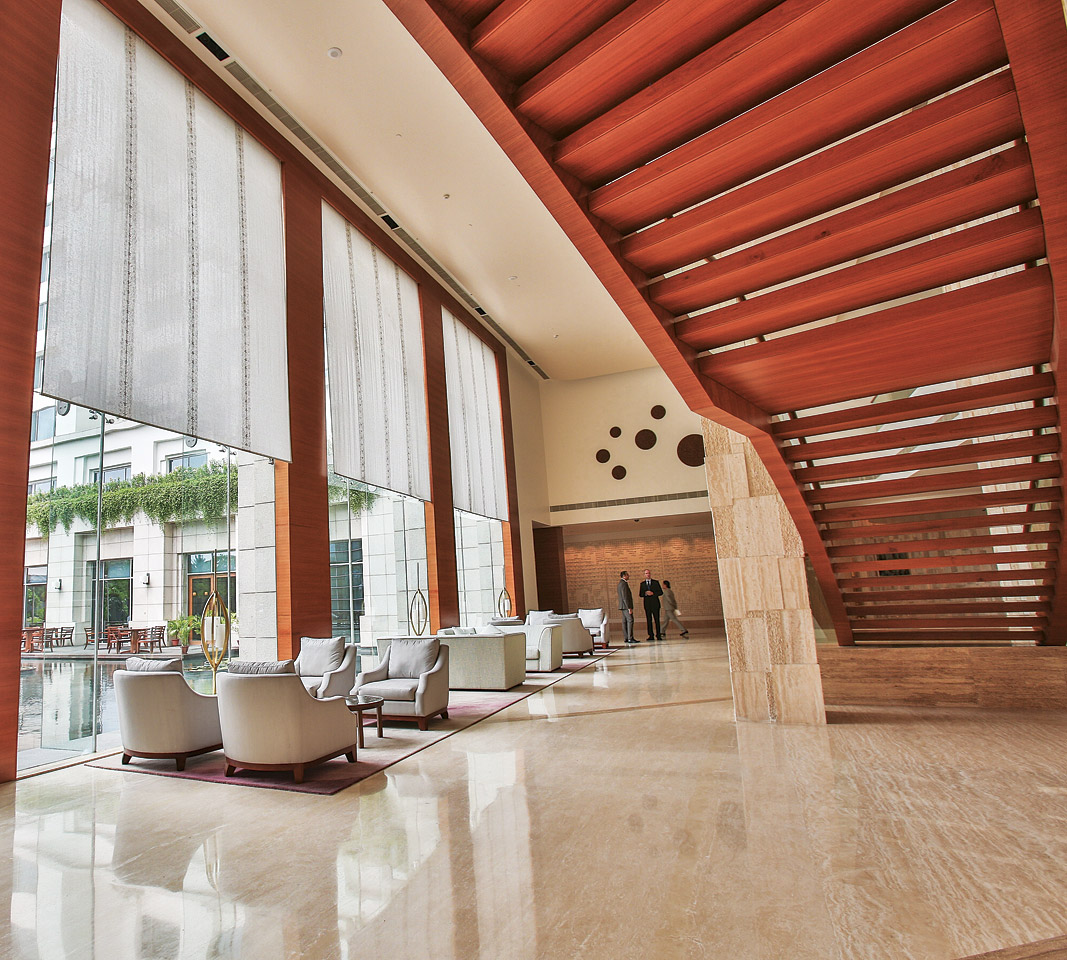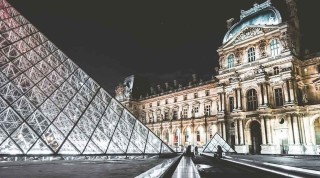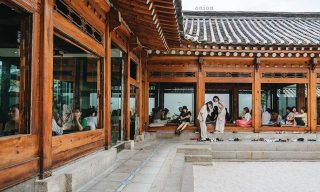Giving Chennai a Whirl
It’s chaotic and confounding—but it’s also the cultural capital of South India, and by some measures the most livable city in the country. Welcome to Chennai, where the rich traditions of old Madras live on in an increasingly cosmopolitan milieu.
By Shoba Narayan
Photographs by Amar Ramesh
“Madras was like a Tamil movie actress of yore,” says Ranvir Shah between sips of wa-termelon juice on the veranda at Amethyst, Chennai’s top boutique-cum-café. “She had a tropical sultriness, and the quality of a seductress who doesn’t give all her charms away. But Chennai is trying to show her face to the world, to look sexy with all these modern surgical changes. It’s all just a put on.”
After a big night on the town, Shah, whose Pakriti Foundation runs a slew of festivals dedicated to poetry, Shakespeare, documentaries, music, and contemporary dance, is indulging in a favorite bit of local discourse: the difference between languid old Madras, as Tamil Nadu’s state capital was officially known until 1996, and brash, fast-developing Chennai, India’s fourth-most-populous metropolitan area. It’s a particularly timely topic given India Today magazine’s recent naming of Chennai as the best (no, make that the best) city in the country, a title that has bemused citizens of this—in the words of poet and journalist Tishani Doshi—“most misunderstood of Indian metros.”
Misunderstood? Well, not entirely. Insular is closer to the mark. For a coastal city, Chennai is deeply conservative, taking pride in its traditions and regarding change with skepticism. Its location on India’s Coromandel Coast has long attracted visitors and plunderers, but neither has been able to change its essential character, nourished over 2,000 years. From the second to the ninth centuries, a series of dynasties—Cholas, Pandyas, Pallavas, and Vijayanagar kings—ruled this area. They commissioned many of the temples that still function today, including the sprawling, stunning Kapaleeswarar Temple in Mylapore, a Dravidian gem founded as far back as the seventh century. Even the arrival of the Europeans—first the Portuguese, who built the original San Thome church over the supposed tomb of the apostle St. Thomas; then the British, who would make Chennai the capital of the Raj’s vast Madras Presidency—did little to alter the city’s sense of self. Cultural touchstones such as filter coffee, Carnatic music concerts, afternoon siestas, and evening walks on Marina Beach remain intact to this day.
Admittedly, I’m biased: I grew up in Chennai, back when it was still Madras, and, call it what you will, I love the place. My parents’ house was in Adyar, a southern suburb named for one of the two rivers (the other is the Cooum) that flows—albeit pollutedly—through the city. We used to take school trips to the sprawling green campus of the Theosophical Society—headquartered here since 1883—to admire the Adyar banyan tree, more than four centuries old and with a sprawling canopy spread over 4,000 square meters.
Adyar has grown since into a posh neighborhood of boutiques, cafés, and salons (including one that actually calls itself Posh). Other parts of the city have changed, too. If Old Madras is localities such as Mylapore and Santhome, modern Chennai is the area around Anna Salai (formerly Mount Road). This is where young Chennaiites come to drink and dance and shop at Higginbotham’s bookstore and Spencer Plaza, and where most of the city’s lavish new hotels have put down stakes.
You can also find a measure of hipster zeitgeist at malls such as the 10,000-square-meter Phoenix Market City, where Mango and Manchester United outlets cater to an affluent jean-clad crowd that revels in speaking Tanglish, the irreverent mash-up of Tamil and English epitomized in the hit song “Why this Kolaveri di?” (And if you’ve never heard of that, you’re one of the few: its music video went viral on YouTube shortly after the song’s 2011 release, sparking flash mobs in such unlikely places as Auckland and Houston and doing for India what “Gangnam Style” did for Korea.)
Tradition still retains its hold, though. Chennai takes pride in being the bastion of South Indian culture, home to dozens of concert halls that host a six-week-long festival of music and dance every December. It is steeped in tradition. Dancers from all over the world come to Chennai to study the graceful movements of Bharatanatyam at Kalakshetra, a foundation established in the 1930s by the late choreographer and theosophist Rukmini Devi Arundale. From her home in Adyar, textile historian and author Sabita Radhakrishnan continues to champion old weaving techniques, as does the Dakshina Chitra, an artisans’ village overlooking the Bay of Bengal 25 kilometers south of Chennai. Nearly a dozen “heritage clubs” meet periodically to discuss Tamil history, archeology, art, and inscriptions. Quietly and consistently, Chennaiites work to preserve their culture in a way that seems somehow stronger and deeper than any other Indian city, save perhaps for Kolkata.
“Chennai people don’t forget their roots,” says Mathangi Srinivasamurthi over coffee at her well-curated boutique, Chamiers, where old and new Chennai mix seamlessly. “I can spend all night dancing to nonsensical rock music at Chipstead and then come home and chant the Vishnu Sa-hasranamam the next morning.” Another day at a fashion show, I watch Sahithya Jagannathan, Miss Chennai 2009, model Western haute couture, then change into a traditional red half-sari to visit a Hindu temple with her elders.
“I would argue that Chennai has changed the least among India’s metros,” says Ambika Pandurang, a member of Chennai’s long-running Sogetsu Study Group. Ikebana in Chennai? Yes indeed. As Pandurang walks me through the group’s latest flower-arrangement exhibition at the leafy sanctuary that is the Lalit Kala arts academy, she adds, “People here look inward because many belong to families that have lived here for generations.”
Lakshmi Venu comes from one such family. Two of her great-grandfathers were Tamil Brahmin elites who founded companies that are now billion-dollar ventures: the automotive giant TVS Group on her father’s side, and the Amalgamations Group on her mother’s. Venu grew up in Chennai, studied in England, married Rohan Murty (the son of Infosys founder Narayana Murty), and now oversees international business development for one of her father’s companies. She shuttles between Boston, where her husband is a junior fellow at Harvard, and Chennai, where her factory is. And while Venu is part of the Chennai elite who frequent the “three M’s”—the Madras Club, Marina Beach, and the Music Academy—she also says that her values are typical of traditional Chennai, emphasizing family, education, culture, and simplicity. When I ask her about her favorite spots in town, she immediately replies, “The beach, and the Murugan Idli Shop in T. Nagar.”
**
Theagaraya Nagar—better known simply as T. Nagar—was built over rice fields in the 1920s and named for Sir Pitti Theagaraya Chetty, one of the founders of the anti-elitist Justice Party. Today, the neighborhood is India’s lar-gest shopping precinct by revenue. Together, retailers here earn a reported US$2 billion annually by selling silk and gold jewelry to some 200,000 shoppers every day, easily outmatching the commercial buzz of Delhi’s Connaught Place or Mumbai’s Linking Road.
Some of South India’s most celebrated textile brands started here, including Nalli, which opened its first storefront in T. Nagar in 1928, across from the banyans and rain trees of Panagal Park. As at the nearby showrooms of Kumaran Silks and Sundari, Nalli specializes in traditional woven silk saris—they’re gorgeous—alongside “modern” versions studded with Swarovski crystals. Interspersed among the sari shops are T. Nagar’s famous jewelry stores. According to the World Gold Council (whose India operations are based in Chennai), India is the world’s largest consumer of gold, and a lot of that consumption—as much as 40 percent—happens right here.
With so much wealth being passed around, it’s little wonder that Tamil Nadu’s chief minister, Jayalalithaa Jayaram, is so bullish about her “Vision 2023” scheme, which aims at growing the state’s annual GDP by 11 percent for the next 10 years. And if anyone can do it, it’s her: known in Chennai as Amma, or “mother,” Jayalalithaa rules the state as if it were a country, and flexes considerable political muscle in Delhi. Sycophantic cabinet ministers tremble when she approaches. Photos of her clad in a forest-green sari (said to cloak a bulletproof vest) adorn billboards all over the city. An erstwhile actress, Jayala-lithaa’s movies continue to play on television during key election moments.
In fact, Chennai, more than any other city I can think of, has a porous connection between cinema and politics. Jayalalithaa’s predecessor, Muthuvel Karunanidhi, began his career as a scriptwriter; her mentor, the charismatic M.G. Ramachandran, was a screen idol. The road to Tamil Nadu’s Raj Bhavan (Government House), it seems, is through Kollywood, as Chennai’s prolific film industry is called.
**
Despite its dubious reputation as the “Detroit of India”—Ford, Hyundai, and BMW all have manufacturing facilities here, as do domestic carmakers like TVS Motor—Chennai is surprisingly green, at least compared to Bangalore, where I now live. Rain- water harvesting is mandatory, and a strong spirit of volunteerism has created countless environmental NGOs, including Nizhal (the name means “shade”), which dedicates itself to planting and protecting trees, and the Environmentalist Foundation of India, started by Arun Krishnamurthy in 2011. Last year, Krishnamurthy was one of two Indians chosen for the Rolex Award for Enterprise, which he won for cleaning Chennai’s lakes.
The city also has a thriving arts scene. Apart from the shows produced by Ranvir Shah’s Pakriti Foundation, there’s the two-year-old Art Chennai, a contemporary arts fair featuring lectures, shows, and artist residencies. And each December sees the start of the Madras Music Season, which hosts a citywide program of concerts and performances.
Even hotels are in on the act. Last year, the Hyatt Regency inaugurated its in-house arts program by hiring curator Rajeev Sethi to commission bee-themed paintings and installations from artists like sculptor S. Nandago-pal, all in a nod to the beehives found on-site when the once-derelict building was taken over by its current owners. The smaller Park Hyatt, which opened last October, incorporates artwork related to the loom, while the ITC Grand Chola, another newcomer, draws inspiration from the Government Museum’s collection of Chola bronzes. With 600 splendidly appointed rooms, it’s also the biggest hotel in town.
I spend a night there, chatting up such local luminaries as leading Bharatanatyam dancer Priyadarshini Govind and lawyer Bharath Raman, whose wife, Padmini, is introduced to me as the person who throws some of the best parties in Chennai. I tell her that I have heard of her soirees through a friend in New York.
“Now you are a true Madrasi,” she laughs. “Here, we don’t have six degrees of separation, we have two.”
We dine at the ITC Grand Chola’s Ottimo restaurant, where the chef is Italian, the sommelier is Polish, and the manager is a Frenchman. One doesn’t have to look much farther than this for evidence of Chennai’s increasingly cosmopolitan edge.
After dinner, I accompany a friend for a night out on the town. We drop in at the cheekily named 10 Downing Street in T. Nagar, which is packed with young couples downing single malts like there’s no tomorrow. At hotel bars such as Pasha, Blend, and Chipstead, the scene is the same: loud music, dancing, and a lot of drinking. Our final destination is a beach party at one of the large farmhouses on East Coast Road, which leads south to Pondicherry. As is typi-cal of Chennai, I run into college friends and acquaintances that I haven’t seen in years. By 3 a.m. everyone is drunk. People jump into the swimming pool fully clothed (or in one case, naked). Couples walk down the beach under a moonlit sky. Someone is sick. At 5 a.m., our host hatches a plan to drive up the road to Eliot’s Beach for a coffee.
Dawn is just breaking as we hear the shore. It’s a new day for Chennai, but it begins with the sleepy old rhythms of Madras.
The Details: Chennai
—Getting There
The newly expanded Chennai International is India’s third-busiest airport, with regular connections to Hong Kong, Singapore, Bangkok, and Kuala Lumpur.
—When to Go
The best months to visit are December through February, the cool season following the monsoons. This is also when the city bustles with festivals and weddings.
—WHERE TO STAY
Visitors have their choice of newly minted five-star hotels. With 327 rooms, the Hyatt Regency Chennai (365 Anna Salai; 91-44/ 6100-1234; chennai.regency.hyatt.com; doubles from US$125) stands out for its extensive art collection and central location on Anna Salai. Backed by the lush Guindy National Park, the
Park Hyatt Chennai (39 Velachery Rd.; 91-44/7177-1234; chennai.park.hyatt.com; doubles from US$184) offers a more serene setting, while across Velachery Road, the 600-room ITC Grand Chola (63 Mount Rd.; 91-44/2220-0000; itchotels.in; doubles from US$167) impresses with its grand expanses of marble and intricately carved stone. Even newer is the Leela Palace Chennai (Adyar Seaface; 91-44/3366-1234; theleela.com; doubles from US$166), the city’s first seaside hotel, with views over the Adyar Estuary and the Bay of Bengal beyond.
—What to see
A short drive south of Chennai are the 7th-century temples and rock carvings of Mamallapuram, a World Heritage Site featuring life-size elephant sculptures hewn from granite boulders. Culture-buffs will also want to explore Chennai’s Government Museum (chennaimuseum.org); the second-oldest museum in India has an astounding collection of Chola bronzes, including a depiction of Shiva performing a cosmic dance.

